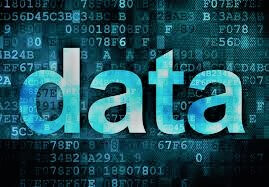Data Type DefinitionWhat is Data TypeSpecifying a data type has several reasons, including resemblance, practicality, and attention-getting. The ability to grasp complicated terminology is usually aided by effective organizing. The concept of a data type is explicitly included in almost all programming languages, albeit factors like simplicity, computability, or regularity frequently constrain the range of acceptable data types. The compiler can often select an effective machine representation with an explicit data type declaration, but the conceptual structure provided by data types should not be undervalued. Most computer languages also let the programmer build new data types, typically by merging several components of different kinds and specifying the new data type's legal operations. For instance, a programmer might invent a brand-new data type called "complex number" that consists of both real and fictitious components or a color data type that is represented by three bytes that represent the quantities of red, green, and blue, as well as a string that contains the name of the color. 
Boolean Data TypeA data type known as a Boolean can only have one of two potential values, either true or false. The Boolean data type is frequently used in programming to describe logical conditions, with true denoting a condition that is satisfied and false denoting a condition that is not. Boolean values are frequently utilized when making decisions, such as in if-else statements or while loops. For instance, the following would be a straightforward Python if statement utilizing a Boolean expression: if x > 3 and x = 5, print ("x is greater than 3") This example executes the print instruction because the Boolean phrase x > 3 evaluates to true. Logical operators like AND, OR, and NOT are frequently combined with the Boolean data type. These operators enable the combination or inversion of Boolean values to build more complex logical expressions. True and False denote Boolean values in various computer languages, including Python. Numeric Data TypeNumeric data types are a group of data types in programming languages that represent numbers. They are used to store numeric values, such as integers, floating-point numbers, and complex numbers. Numeric data types are an important part of programming, allowing us to perform mathematical operations and calculations. Here are some common numeric data types:
Different programming languages may have different numeric data types or use different terminology. Understanding numeric data types is important in programming, as it allows us to manipulate and perform calculations on numbers efficiently and accurately. Enumeration Data TypeProgrammers can define a set of named values using enumerations, often known as Enums, a data type. Enumerations might be helpful when a variable has a fixed range of possible values and you wish to impose that limitation in your code. A term like "Enum" is commonly used to define an enumeration, followed by a list of named values enclosed in curly brackets. String Data TypeIn programming, textual data is represented by the data types string and text type. Even though "string" and "text" are frequently used interchangeably, their definitions might vary somewhat depending on the computer language and the situation. A string is often a collection of characters, including letters, numbers, and symbols. A data type named string, a built-in type in many computer languages, is typically used to represent strings. There are several ways to alter strings, including concatenation, substring extraction, and searching. Union TypeUnion types frequently represent values that can be any of several distinct types but whose type won't be known until runtime. If you wanted to express a variable that could store either an integer or a floating-point value, you would declare a union type in C, for instance: Meta TypeA meta type in programming is a data type that stands in for other data types. Instead of having a real value in and of itself, it is a type that specifies the traits of another type. In programming languages that offer introspection-the ability for a program to look at its structure and attributes while running-meta types are frequently employed. In these languages, meta types can be represented as objects, enabling programmatic inspection and manipulation.
Next TopicMutual Funds Definition
|
 For Videos Join Our Youtube Channel: Join Now
For Videos Join Our Youtube Channel: Join Now
Feedback
- Send your Feedback to [email protected]
Help Others, Please Share










